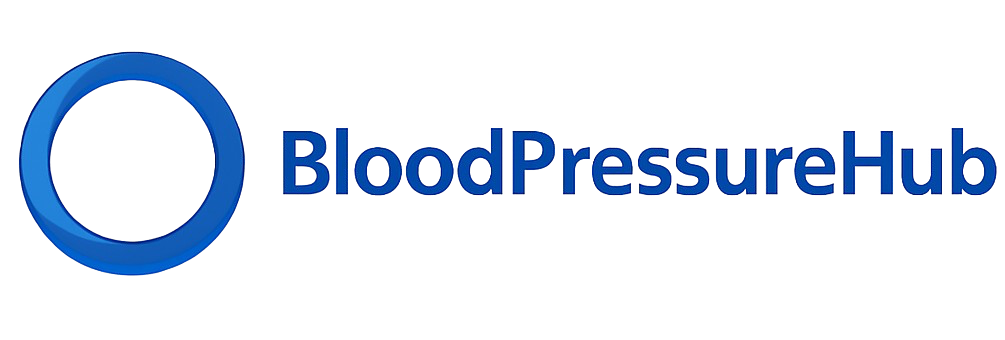I Was Told I Have High Blood Pressure: What's Next
The BPHub Team
2025-03-22

Receiving a diagnosis of high blood pressure can be overwhelming, and it's natural to feel a mix of emotions—worry, confusion, and even a bit of fear. But take heart: you're not alone, and there are many practical steps you can take to manage your condition. In this friendly yet professional guide, we'll walk you through what high blood pressure means, what you can do next, and how you can work with your healthcare provider to take control of your health. Our aim is to help you understand your diagnosis in plain language and empower you with the knowledge to make positive changes.
Understanding High Blood Pressure
What Is High Blood Pressure?
High blood pressure, also known as hypertension, occurs when the force of blood against your artery walls is consistently too high. Over time, this increased pressure can damage your arteries and organs, raising the risk of serious health issues like heart disease, stroke, and kidney problems.
Key Points to Know:
- Silent Condition: High blood pressure often doesn't have noticeable symptoms, which is why it's sometimes called the "silent killer."
- Measurement: It is typically measured using two numbers—systolic (the top number) and diastolic (the bottom number). A reading of 130/80 mm Hg or above is considered high.
- Why It Matters: When left untreated, hypertension can gradually damage your cardiovascular system. Even small improvements in blood pressure can significantly reduce your risk of health complications.
For more detailed information, you can visit the American Heart Association website.
What Does a Diagnosis Mean for You?
Finding out you have high blood pressure is not a life sentence—it's a call to take proactive steps toward better health. Here's what your diagnosis means and what you can expect next:
1. It's Time to Learn More About Your Health
Understanding your condition is the first step toward managing it effectively. Ask your doctor questions like:
- What exactly is my blood pressure reading, and what does it mean?
- How often should I monitor my blood pressure?
- What lifestyle factors might be contributing to my high blood pressure?
2. You're Not Alone
Millions of people around the world live with high blood pressure. With proper management, many lead healthy, active lives. Your healthcare provider is there to guide you, and you can join support groups or online communities where others share their experiences and tips.
Next Steps: Taking Control of Your Health
Once you know you have high blood pressure, the next step is to develop a plan that works for you. The goal is to lower your blood pressure and reduce your risk of complications through a combination of lifestyle changes, regular monitoring, and, if necessary, medication.
A. Lifestyle Modifications
One of the most powerful tools in managing high blood pressure is lifestyle change. Here are some key areas to focus on:
1. Adopt a Heart-Healthy Diet
What to Do:
- Eat More Fruits and Vegetables: These foods are rich in potassium, which can help counteract the effects of sodium.
- Reduce Salt Intake: Cutting down on salt can lower blood pressure. Learn more about reducing salt on the Mayo Clinic's guide.
- Choose Whole Grains: Whole grains provide fiber and nutrients that support heart health.
- Limit Processed Foods: Processed foods are often high in sodium and unhealthy fats.
Friendly Tip: Try cooking at home more often. This way, you control the ingredients and can experiment with herbs and spices instead of relying on salt for flavor.
2. Increase Physical Activity
What to Do:
- Aim for Regular Exercise: Aim for at least 150 minutes of moderate-intensity aerobic activity per week. This can be as simple as brisk walking.
- Incorporate Strength Training: Building muscle helps improve your overall metabolism and supports cardiovascular health.
- Stay Consistent: Choose activities you enjoy to make exercise a regular part of your routine.
Regular exercise helps strengthen your heart, reduce stress, and improve your overall well-being. It's one of the most effective ways to lower blood pressure naturally.
3. Maintain a Healthy Weight
What to Do:
- Monitor Your Weight: Small weight losses can have a big impact on blood pressure.
- Set Realistic Goals: Work with your healthcare provider to determine a healthy target weight for your body type.
- Focus on Sustainable Changes: Rather than quick fixes, adopt long-term habits that support gradual, steady weight loss.
Even a modest weight loss of 5-10% of your body weight can lead to significant improvements in blood pressure levels.
4. Limit Alcohol and Quit Smoking
What to Do:
- Reduce Alcohol Consumption: Limit alcohol to moderate levels—up to one drink per day for women and two for men.
- Stop Smoking: Smoking can damage blood vessels and accelerate the progression of hypertension.
- Seek Support: Look for local programs or counseling services if you need help quitting smoking.
Both reducing alcohol intake and quitting smoking are critical steps for improving your heart health.
B. Regular Monitoring and Medical Guidance
1. Monitor Your Blood Pressure at Home
What to Do:
- Invest in a Home Monitor: A validated, easy-to-use blood pressure monitor can help you keep track of your readings.
- Record Your Readings: Keep a log of your blood pressure measurements. This record can provide valuable information for your doctor.
- Check Regularly: Try to measure your blood pressure at the same time each day under similar conditions.
Regular monitoring helps you understand your condition better and enables you and your healthcare provider to make timely adjustments to your treatment plan.
2. Work with Your Healthcare Provider
What to Do:
- Schedule Regular Check-Ups: Consistent follow-ups with your doctor are essential for managing hypertension.
- Discuss Medication Options: If lifestyle changes alone aren't enough, your doctor might recommend medication. There are many effective medications available, and your provider will tailor the treatment to your needs.
- Ask Questions: Never hesitate to ask for clarification if something is unclear about your diagnosis or treatment plan.
A collaborative approach with your healthcare provider is key to effective management. Your doctor is your partner in this journey.
Understanding the Risks and Long-Term Outlook
The Importance of Early Management
The sooner you take steps to manage your blood pressure, the better your long-term health outcomes. High blood pressure is a major risk factor for:
- Heart Disease: Including heart attacks and heart failure.
- Stroke: High blood pressure can damage blood vessels in the brain, leading to a stroke.
- Kidney Disease: The kidneys are particularly vulnerable to the effects of high blood pressure.
- Vision Loss: Damage to the blood vessels in your eyes can lead to vision problems.
Long-Term Benefits of Managing High Blood Pressure
By taking control of your blood pressure now, you can significantly reduce your risk of these complications. Studies have shown that even small reductions in blood pressure can lead to a considerable decrease in the risk of cardiovascular events. Consistent management through lifestyle changes and, if necessary, medication, can help you live a longer, healthier life.
For more detailed information on the risks of high blood pressure and how to manage them, visit the Centers for Disease Control and Prevention (CDC) website.
Lifestyle Success Stories
Hearing about others who have successfully managed high blood pressure can be very inspiring. Here are a couple of brief stories:
Story 1: Sarah's Journey to Better Health
Sarah, a 52-year-old teacher, was shocked when her doctor told her she had high blood pressure. Determined to make changes, she started by reducing her salt intake, cooking more meals at home, and walking daily. Over the course of a year, her blood pressure dropped significantly, and she even lost a few pounds. Sarah's success was a combination of lifestyle changes, regular monitoring, and close collaboration with her healthcare provider.
Story 2: John's New Exercise Routine
John, a 60-year-old retiree, had always enjoyed watching sports but never thought much about his health—until his blood pressure readings started creeping up. His doctor recommended regular exercise and a heart-healthy diet. John began cycling every morning and joined a local fitness group. Not only did his blood pressure improve, but he also found a new sense of community and purpose. John's story highlights the importance of staying active and engaged.
These stories remind us that while a diagnosis of high blood pressure can be daunting, it is also an opportunity to make positive changes that can lead to a better quality of life.
Tips for Staying Motivated
Changing long-established habits can be challenging. Here are some practical tips to help you stay on track:
- Set Achievable Goals: Break your goals into small, manageable steps. Celebrate small victories along the way.
- Keep a Journal: Document your daily food intake, exercise, and blood pressure readings. This will help you notice patterns and stay accountable.
- Find a Buddy: Partner with a friend or family member who also wants to improve their health. Support each other through the process.
- Educate Yourself: Stay informed by reading reliable sources such as the Mayo Clinic and the American Heart Association.
- Seek Professional Help: If you're struggling, consider consulting a nutritionist or a fitness coach who specializes in heart health.
Remember, every small change adds up to significant improvements in your health over time.
Final Thoughts
Finding out that you have high blood pressure is undoubtedly a wake-up call, but it's also an opportunity to take charge of your health. By understanding your condition, making practical lifestyle changes, and working closely with your healthcare provider, you can lower your blood pressure and reduce your risk of serious health problems.
This journey might feel challenging at first, but with persistence and the right support, you can make sustainable changes. Your diagnosis does not define you—it's simply a starting point for a healthier, more fulfilling life. Take one step at a time, and remember that every positive change, no matter how small, brings you closer to your goal.
Call-to-Action
If you've recently been diagnosed with high blood pressure, now is the time to act. Start by setting up a consultation with your healthcare provider to discuss your personalized plan. Explore ways to incorporate heart-healthy foods into your diet, find an exercise routine that you enjoy, and consider joining a support group for motivation. Share your journey with friends or family members who might benefit from these insights. Your health is a lifelong journey—take the first step today toward a healthier future.
References
- American Heart Association. High Blood Pressure. Accessed March 2025.
- Centers for Disease Control and Prevention (CDC). Blood Pressure. Accessed March 2025.
- Mayo Clinic. High Blood Pressure (Hypertension): Diagnosis and Treatment. Accessed March 2025.
- National Heart, Lung, and Blood Institute. What Is High Blood Pressure?. Accessed March 2025.
This blog was created by the BPMaestro Team under the supervision of Santiago Miriuka, MD PhD.
